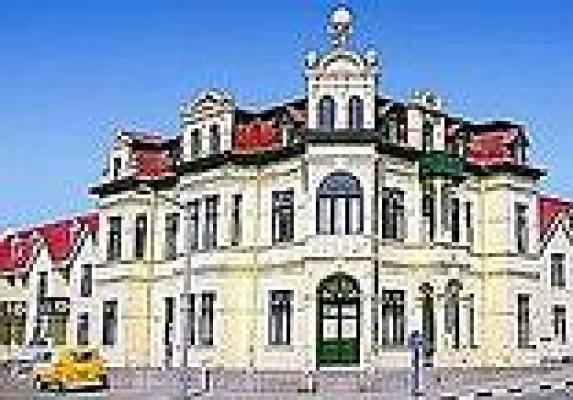Accommodation in Namibia | Wildlife & Game Reserves of Namibia | Namibia Tours & Safaris | Map of Namibia | Namibia Visitors Information
Probably the most unique feature about Namibia is its space. Incessant deserts stretch for miles to meet the most dramatic sunsets you can imagine. This country, with its strong German influence, has a magnificent coastline speckled with charming little towns rich in history.
One such town is Swakopmund.
Swakopmund was founded two years later than Windhoek, in 1892, by Captain Curt von Francois as the main harbour of German South West Africa.
Increased traffic between Germany and its colony necessitated establishing of own port as Walvis Bay, located 33 kilometres south, was already in British possession.
The appearance of the town, with its 30 000 inhabitants, is characterised by numerous colonial buildings with the Woermann House from 1905 as its landmark. The former trading house with its 25 metre high Damara Tower and its courtyard bordered by arcades, today houses the city library and an art gallery.
Town tours, fishing trips, tours to Namib Naukluft Park (Welwitschia Mirabilis, Moon landscape), museum, snake park, sandboarding, parasailing and hot air ballooning.
Swakopmund is a popular seaside resort with many tourist attractions and a pleasant climate in summer. Visitors can go on town tours, fishing trips, tours to Namib Naukluft park (Welwitschia Mirabilis, Moon landscape), museum, snake park, sandboarding, parasailing and hot air ballooning.
Driving along the stunning dune-lined coastline is particularly attractive, whether you go south to Walvis Bay (30 km) or to the National West Coast Recreation Area in the north.
The road along the beach and leads to the Ugab rivermouth and further to the fishermen's resort of Henties Bay and Cape Cross on the way. North of the Ugab, the Skeleton Coast National Park starts.
Interesting sights and buildings in Swakopmund include:
Marine memorial - design of Berlin sculptor Wolff, donated to the town by Marines from Kiel in 1908.
War memorial - unveiled on 10 November 1963 in memory of those killed in World War 2.
The Mole - an unsuccessful attempt to construct the artificial harbour. 375 metres pier was completed in 1900 but by winter 1906 a sandbank completely blocked it.
Princess Rupprecht House - a private pension the original building was completed in 1901 as a military hospital.
Kaserne - the original building served as a barracks. The design is similar to Alte Feste in Windhoek and Fort Namutoni in Etosha park and the building was completed in 1906.
Railway station (Swakopmund hotel from 1994) - declared a National monument in 1972 the building, designed by C. Schmidt (tower design by Willy Sander - architect of Windhoek's ''Three Castles''), was completed in 1901.
German school - completed in October 1913, the building hosted both the government and municipal secondary schools.
Deutsche Evangelical church - the building designed by Otto Ertl was consecrated on 7 January 1912. The bells were imported from Germany where they were made by Franz Schilling.
Antonius Gebaude - designed by Otto Ertl the building (the hospital) was opened in March 1908.
Lighthouse. - first 11 metres were erected in July 1902 and further 10 meters added in 1910.
State House (Kaiserliches Bezirksgericht) - built as a magistrate's court in 1902 the building served as a summer residence for top government officials for several decades.



